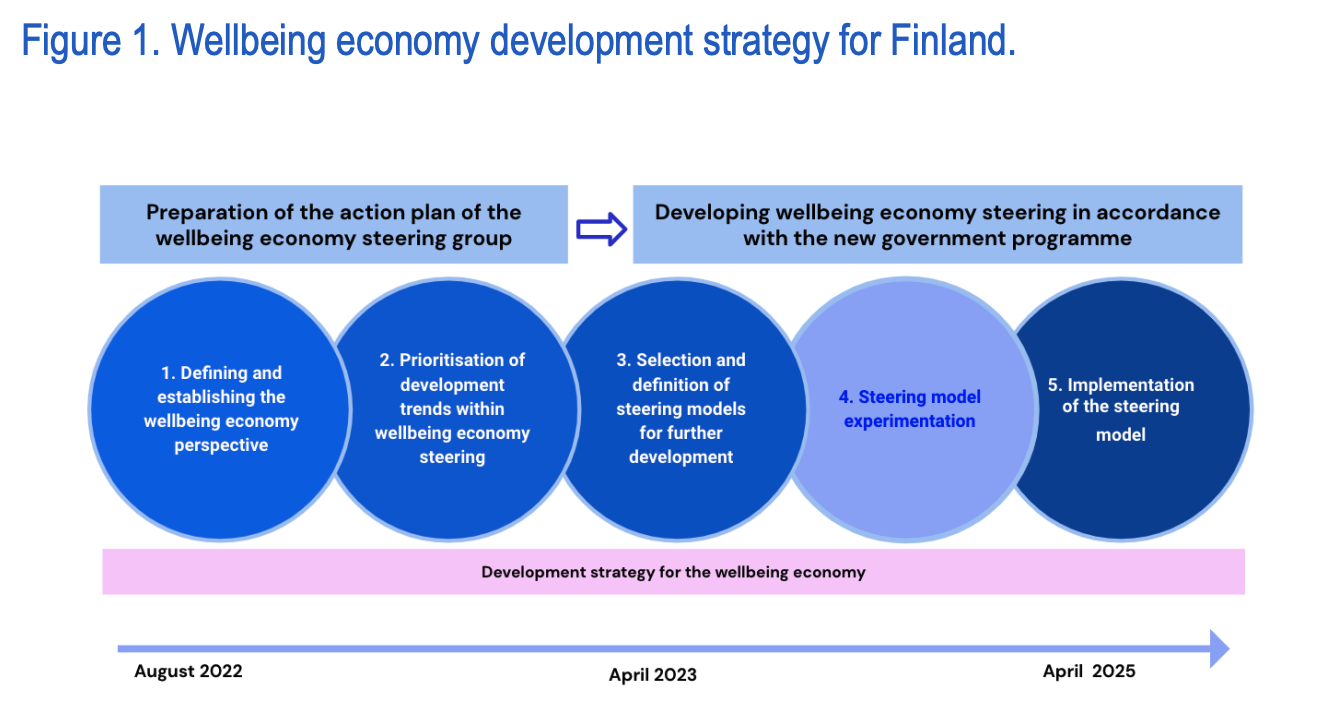An economy of wellbeing serves amongst other things, individual and community happiness, safety, cultural identity, education, and participation. In this study, Demos Helsinki partnered up with SOSTE and THL to assess what an economy of wellbeing in Finland might look like, and what next steps would facilitate a peaceful transition.
In Finland, civil society actors brought the perspective of a wellbeing economy into public debate, and in recent years this perspective has also gained traction at the Government level. As the wellbeing economy is under development in different countries, the Finnish Government launched a study to define what kind of wellbeing economy governance model would work in Finland in the context of social security reform (you can find more information about this project in Finnish here).
As part of this study, we partnered up with SOSTE Finnish Federation for Social Affairs and Health and THL, the Finnish Institute for Health and Welfare, to assess what an economy of wellbeing in Finland might look like, and what next steps will facilitate a peaceful transition.
At its core, an economy of wellbeing serves amongst other things, individual and community happiness, safety, cultural identity, education, and participation. In order to build the model collaboratively, we held four workshops throughout the project timeline where we developed the governance model and its monitoring mechanisms with key stakeholders, including the Association of Finnish Municipalities, the Ministries of Finance, Social Affairs and Health, and Economic Affairs and Employment.
Key Findings
A new and exciting aspect of this study was the international benchmarking. This involved analysing the implementation, development, and outcomes of wellbeing models in seven countries: the Netherlands, Iceland, Italy, Sweden, Scotland, New Zealand and Wales.
This international comparison provided an extensive basis for comparing the national wellbeing economy goals of different countries, as well as their governance and monitoring. These international examples also offer alternative models for developing wellbeing economy governance in Finland.
The study also mapped out the current state and conditions of wellbeing economy steering in Finland. Four different development trends suitable for the Finnish context are described, on which the steering model can be further developed.
The four suggested models Finland could develop are the following:
- Steering within existing structures
- Centralised model
- Parliamentary mechanisms
- A model of humble governance
These models can be embedded into current governance structures, and can equally be taken up by upcoming government programmes. In other words, the models are all within our reach. All we need now is action.
Recommendations
On the basis of the study, we recommended a strategy for the development of the wellbeing economy governance, that included the following five steps for Finland’s development of a wellbeing economy model.

The report is currently available only in Finnish, here.
The Paths to a wellbeing economy project has been implemented as part of the 2021 Government plan for analysis, assessment and research.
For further information, please contact:
Leena Alanko
Emancipatory Economy Lead, Demos Helsinki
leena.alanko@demoshelsinki.fi
Chair of the project’s steering group:
Senior Ministerial Advisor Susanna Grimm-Vikman
Ministry of Social Affairs and Health
susanna.grimm-vikman@gov.fi


Designing policies for a wellbeing economy — learnings from Finland
Post
December 2, 2021
For a wellbeing economy, we need to transform governance
Post
March 31, 2023
How to introduce a wellbeing economy model
Post
June 30, 2022
A Transition to Just and Green Societies in the EU Requires Fixing the Economic Policy: A Suggestion for Implementing Economy of Wellbeing
Publication
January 20, 2020
‘The Economy of Wellbeing’ Builds Sustainable European Union
Project
February 1, 2020